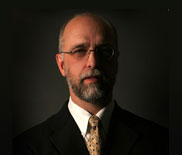Quantum Computing
Quantum computing technology is not just another microprocessor with a faster clock speed. It is a completely new paradigm of computing built around quantum physics. This technology will allow us to process data so much faster than current models that it will solve our most complex calculations, which would take current computers months or years to solve, in just milliseconds. Google recently released data reporting that a mathematical problem estimated to take a supercomputer 10,000 years to calculate was solved in 6 minutes, 9 seconds on a quantum computer. Quantum computing is about using quantum physics to design computers using atoms rather then transistors. Of course, it is a new and complex world where everything has to be reimagined. I spent last week (October 17-22) attending the second Annual IEEE Quantum Computing Week and heard from brilliant people all around the world doing research and development today. While most people say we are where classical computing was in the ’70 and thus we are 30-40 years away from production quantum computing I want to remind everyone that one of the reasons we have been advancing so fast in all areas of science is the we constantly use last years computing advances to constantly increase all technology advances. I think we are only five years from quantum computing success and production use.
Unlike regular computers, where everything is either a 1 or a 0, a quantum computer supports qubits, being 0 or 1 and both 0 and 1 at the same time. This means that two qubits could perform four calculations at the same time and this grows exponentially. This allows the new quantum computers, which today have very few qubits to perform complex calculations. IBM, a leader is quantum computing, has announced Eagle with 127-qubits by the end of 2021, a 433-qubit system by end of 2022, and 1121-qubit system by end of 2023. Mathematically a 1000 qubit system would have more processing power than all the computers on the planet today added together. However, these systems operate at -459 degrees Fahrenheit or cryogenic temperatures. In addition, they need chip-to-chip quantum interconnects, isolators, wiring density, power dissipation, signal fidelity, control systems, error correction. The debates to what type quantum computers will be the most effective is ongoing. Superconducting loops (IBM, Google), trapped ions (Ionq, Honywell), silicon quantum dots (Intel, HRQ), topological (Microsoft), Photonic qubits (PsiQuantum) to list a few of the quantum paths we are currently exploring.
Superposition
One of the properties that sets a qubit apart from a classical bit is that it can be in superposition. Superposition is one of the fundamental principles of quantum mechanics. In classical physics, a wave describing a musical tone can be seen as several waves with different frequencies that are added together, superposed. Similarly, a quantum state in superposition can be seen as a linear combination of other distinct quantum states. This quantum state in superposition forms a new valid quantum state. Quantum superposition is fundamentally different from superposing classical waves. A quantum computer consisting of nn qubits can exist in a superposition of 2^n2n states. In contrast, playing nn musical sounds with all different frequencies, can only give a superposition of nn frequencies. Adding classical waves scales linear, where the superposition of quantum states scales exponential.
Entanglement
One of the other counter-intuitive phenomena in quantum physics is entanglement. In simple terms a pair or group of particles is entangled when the quantum state of each particle cannot be described independently of the quantum state of the other particle(s). Albert Einstein famously said that quantum mechanics should allow two objects to affect each other’s behaviour instantly across vast distances, something he dubbed “spooky action at a distance”. Decades after his death, experiments confirmed this true while many reject this claiming it requires travel beyond the speed of light. However most recently the Chinese have proven this while it is still not fully understood. When two qubits are entangled there exists a special connection between them. The entanglement will become clear from the results of measurements. The outcome of the measurements on the individual qubits could be 0 or 1. However, the outcome of the measurement on one qubit will always be correlated to the measurement on the other qubit. This is always the case, even if the particles are separated from each other by thousands of miles.
For example, two particles are created in such a way that the total spin of the system is zero. If the spin of one of the particles is measured on a certain axis and found to be counterclockwise, then it is guaranteed that a measurement of the spin of the other particle (along the same axis) will show the spin to be clockwise. This seems strange, because it appears that one of the entangled particles “feels” that a measurement is performed on the other entangled particle and “knows” what the outcome should be, but this is not the case. This happens, without any information exchange between the entangled particles. They could even be billions of miles away from each other and this entanglement would still be present. The fact that qubits can be entangled, makes a quantum computer more powerful than a classical computer. With the information stored in superposition, some problems can be solved exponentially faster.
When you marry quantum computing with literally unlimited amounts of data, and artificial intelligence, we will be able to identify and solve problems we cannot even imagine in milliseconds. Yes, Stephen Hawking, Elon Musk and others say AI will become dangerous when it has this kind of processing power. We will not only achieve singularity, but we will move into a world where computers have such super intelligence that mankind will be threatened. The biggest problem we have today is learning how to program these new computers. But again, AI is already being used to program quantum computers for us. AI will use this new computing power to develop new operating systems and new algorithms in hours instead of years. This unlimited capacity will lead to supercomputers far beyond our ability to understand and control them.
Computing Lifecycle: From the Mainframe to Quantum Computing
© 2021 Jack B. Blount














